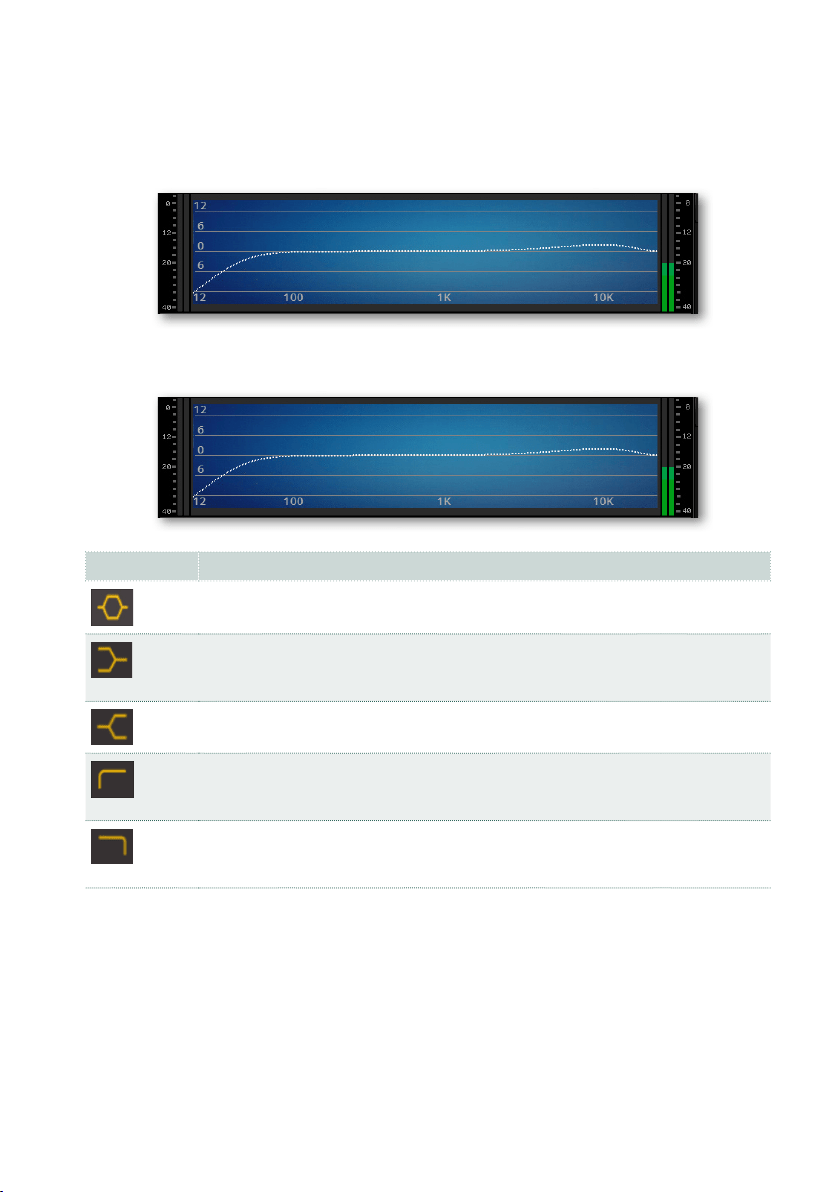Loading ...
Loading ...
Loading ...

Setting the mastering effects on the audio outputs |591
Programming the EQ
> Look at the results of any edit in the diagram. The diagram shows the EQ
curve. Its shape changes depending on the various parameter values.
> Touch the curve shape on the top-left or top-right corner of the EQ diagram,
and choose between the different types of curve for the lowest and highest bands.
EQ Shape Meaning
Bell-shape curve, allowing for detailed correction of a specic range of frequen-
cies. The selected frequency is at the center of the EQ band.
Low-shelving curve, allowing for smoothly cutting or boosting the lowest fre-
quencies. This will let you add more body to the sound (boost), or remove boomy
frequencies (cut).
High-shelving curve, allowing for smoothly cutting or boosting the highest fre-
quencies. This can help adding ‘air’ to the mix (boost), or remove sibilance (cut).
Low-cut (or high-pass) curve, letting you cut the lowest frequencies. Drastically
removing the very low frequencies helps getting rid of bass frequencies out of
the useful musical range, but stealing energy to the mix.
High-cut (or low-pass) curve, letting you cut the highest frequencies. Drastically
removing the very high frequencies helps removing unwanted noise out of the
useful musical range.
> Use the IN/OUT indicators to check the level of the audio entering and coming
out of the MaxxAudio® processor. Be sure the indicators never go to the red area
(since this means distortion).
> Use the Gain parameter to change the emphasis or attenuation of the cor-
responding band. Use it to make the frequencies stronger or weaker.
> Use the Freq parameter to change the center frequency of the correspond-
ing band. Center it on the problematic frequency, or the harmonics you want to
emphasize or attenuate.
Loading ...
Loading ...
Loading ...
